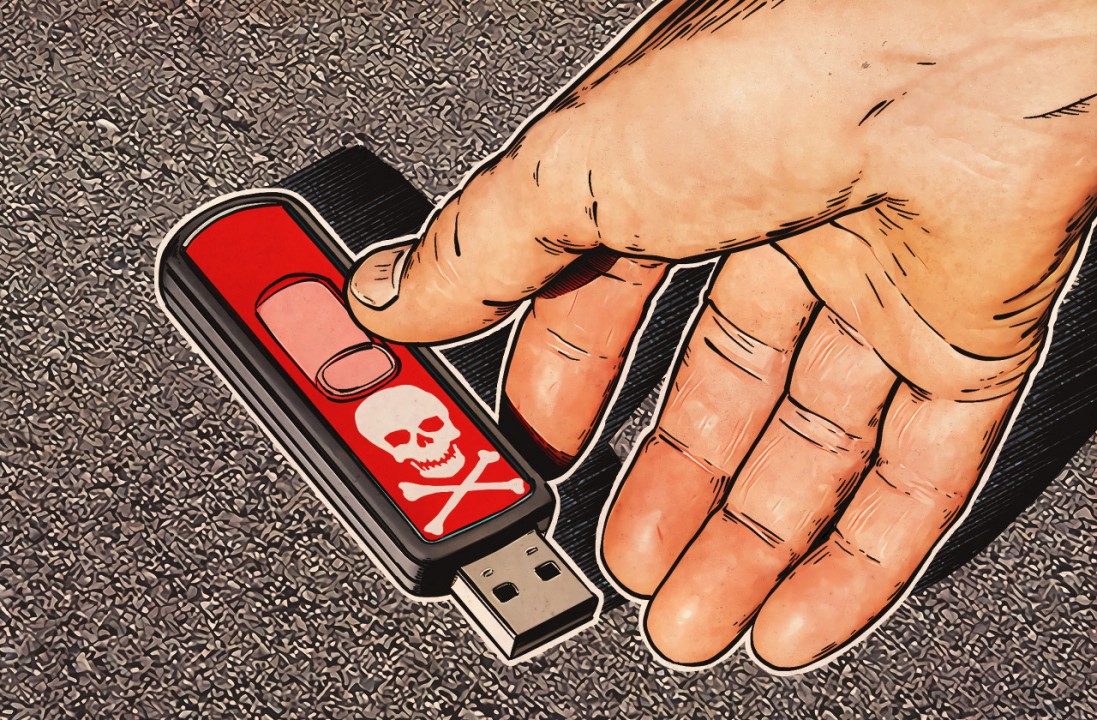USB Baiting Attack
 Maxwell Antwi Bosiako
Maxwell Antwi Bosiako
In today’s connected world, many of us are vigilant about suspicious emails or shady websites. However, USB baiting is a more subtle threat that exploits human psychology, especially our curiosity and helpfulness. This blog will dive into what USB baiting is, why it works, and how you can protect yourself and your organization from falling victim to this deceptive tactic.
What is USB Baiting?
USB baiting is a type of social engineering attack where an attacker leaves a USB device in a public place, hoping that someone will pick it up and connect it to their computer. These USB drives may be disguised as lost storage devices, branded giveaways, or even labeled with intriguing phrases like "Employee Salaries 2024" or "Confidential Report."
Once plugged into a computer, the USB can:
Install malware or spyware.
Open a backdoor that allows the attacker remote access to the system.
Deploy ransomware to lock users out of their data.
Exfiltrate sensitive files such as passwords or personal information.
Why Does USB Baiting Work?
USB baiting is effective because it taps into common human instincts:
Curiosity: People are naturally curious about what’s on the drive.
Helpfulness: Some may try to return the device to its owner or check for contact information.
Trust: If the USB is branded or looks familiar, it seems more legitimate.
Negligence: Many users lack awareness of how plugging in unknown devices could lead to severe cybersecurity risks.
Real-World Examples of USB Baiting Attacks
Stuxnet Worm (2010): A now-infamous cyberattack on Iranian nuclear facilities was allegedly launched by infecting systems with malware delivered via USB drives.
Google Study (2016): In an experiment, researchers placed USB drives in public areas. Shockingly, 45% of peoplewho picked up a drive plugged it into their computers—showing just how tempting these attacks can be.
How to Protect Yourself and Your Organization from USB Baiting
1. Educate and Train Employees
Awareness is the first step to prevention. Conduct cybersecurity awareness training to highlight the dangers of USB baiting and other social engineering attacks.
2. Implement Device Control Policies
Organizations should use endpoint security tools to prevent unauthorized USB devices from being connected to company systems.
3. Disable Auto-Run Features
Ensure that computers are configured to disable automatic execution of programs when a USB device is connected.
4. Monitor and Log USB Usage
Use monitoring tools to track USB device activity and detect suspicious behavior early.
5. Encourage a “Zero Trust” Mindset
Adopt a Zero Trust policy—don’t plug in any USB device unless you are certain of its origin.
What to Do If You Fall Victim to USB Baiting
If you suspect that an infected USB has been plugged into your system, take immediate action:
Disconnect the system from the network to contain the spread of malware.
Scan the system with updated antivirus software.
Notify IT personnel or the cybersecurity team.
Change passwords if sensitive information may have been compromised.
Conclusion
USB baiting is a powerful form of cyberattack because it relies on human behavior rather than technical vulnerabilities. The simplicity of the tactic makes it dangerous, but with the right awareness, policies, and precautions, you can avoid becoming a victim.
When it comes to cybersecurity, remember: if you don’t know where a USB device came from, don’t plug it in.Sometimes, the simplest preventive action is the most effective.
Subscribe to my newsletter
Read articles from Maxwell Antwi Bosiako directly inside your inbox. Subscribe to the newsletter, and don't miss out.
Written by

Maxwell Antwi Bosiako
Maxwell Antwi Bosiako
I am a cybersecurity enthusiast passionate about protecting digital landscapes. Join me as I explore and share the latest in cybersecurity news, trends, and educational content to help you stay informed and secure in the digital world.